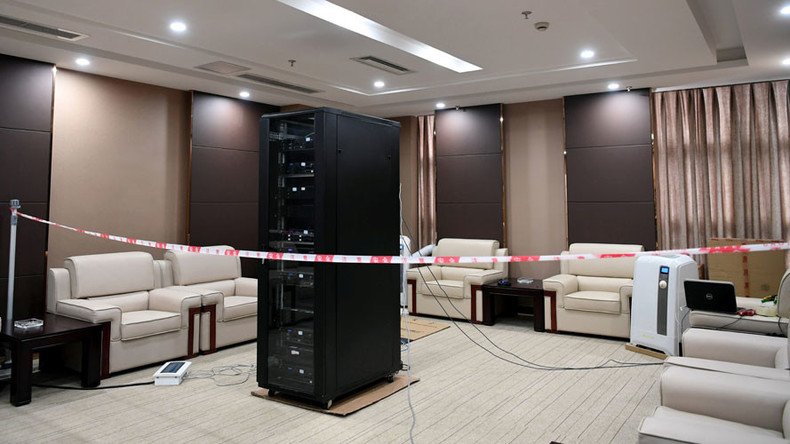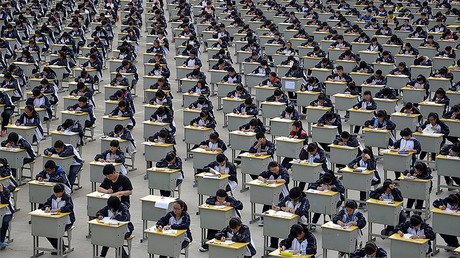AI computer joins millions of Chinese students taking fearsome entrance exam

Among the almost 10 million students taking nationwide college entrance exams in China this week was an artificial intelligence program. The tests also saw authorities deploy facial recognition and drones, in an effort to clamp down on high-tech cheating.
The exam, colloquially known as the ‘gaokao’ in China, was held over Wednesday and Thursday across most of the country. According to Xinhua, a total of 9.4 million Chinese high school students applied this year, a little less than the record 10.5 million in 2008.
The fierily competitive exam is considered one of the most important steps in the life of anyone wishing to have a successful white-collar career in China.
This year however, the exam was taken by an unusual candidate: an artificial intelligence algorithm. Called AI-MATHS and running on 11 servers with no internet connection, the robot was built by Zhunxingyunxue Technology. The Chengdu-based company is participating in a government-sponsored project, which by 2020 aims to develop software capable of passing the exam with a grade high enough to qualify for admission to one of nation’s best universities.
AI-MATHS didn’t take the entire gaokao test, though, which includes the Chinese language, mathematics, a foreign language and a subject of the candidate’s choice. Instead, the machine solved only the math tests prepared by the education authorities in various provinces of China.
The robot finished the test offered to Beijing students in 22 minutes, scoring 105 points out of 150. In another exam it scored 100 points in 10 minutes, Xinhua reported.
The result is an improvement on February, when AI-MATHS barely passed the minimum admission score of 90 points in a math test from a previous year. That’s slightly below the 109 average scored by human Beijing students in math tests last year.
“It would take two hours for a human to finish the test. I hope next year the machine can improve its performance on logical reasoning and computer algorithms and score over 130,” said Lin Hui, the company's CEO.
The main challenge here, of course, is not the calculations themselves but rather in teaching the software to interpret the natural language of the problems.
“For example, the robot had a hard time understanding the words 'students' and 'teachers' on the test and failed to understand the question, so it scored zero for that question,” Lin said.
Developing software capable of interacting in natural language is a major challenge for AI researchers. Among the more publicized breakthroughs in this area was IBM computer Watson, which was designed to play the quiz game ‘Jeopardy!’ and in 2011 beat former winners Brad Rutter and Ken Jennings. IBM's creation had access to 4-terabyte storage of various data to produce answers.
While Chinese robotic candidates are still struggling to grasp less formal parts of the gaokao, humans are exploring new technological ways to improve their scores through cheating – prompting something of an arms race with the education authorities.
This year, organizers of the exam in some provinces are using facial recognition devices to validate the identity of the students taking exams. The anti-cheating arsenal also includes metal detectors, mobile phone signal suppressors and drones patrolling exam centers.













